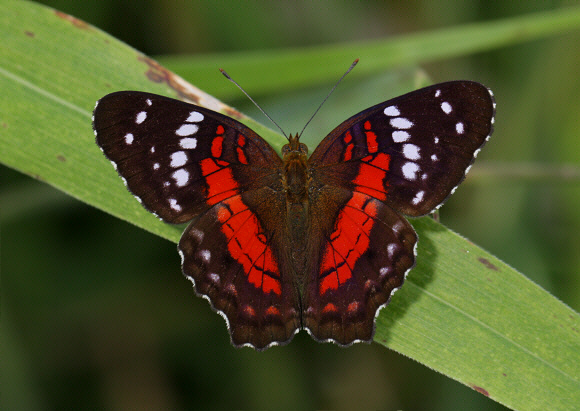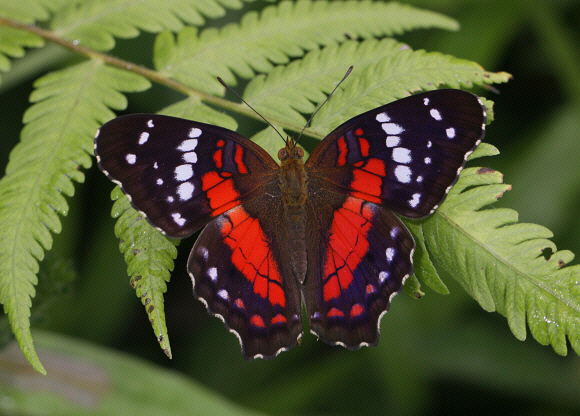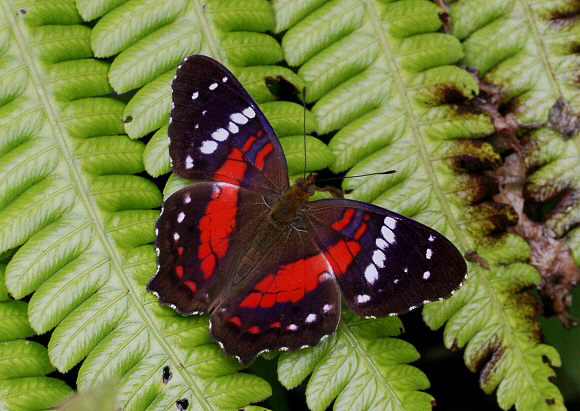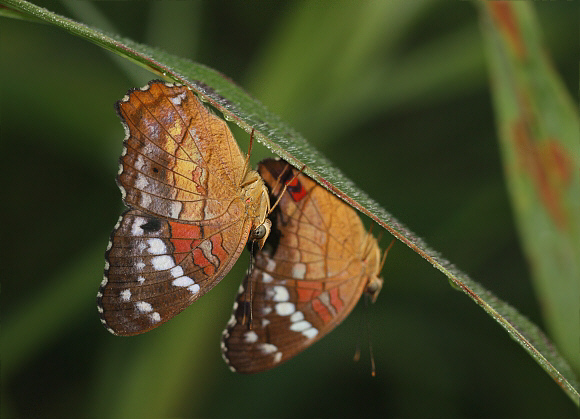
Introduction
The Nymphalinae includes many of the most well known and beautiful Palaearctic butterflies such as the Red Admiral Vanessa atalanta, Painted Lady Vanessa cardui, Camberwell Beauty Nymphalis antiopa, Comma Polygonia c-album, and Peacock Inachis io. Among the neotropical representatives are Colobura, Smyrna, Napeocles, Siproeta, Baeotus, Historis, Junonia, Anartia and Hypanartia.
The genus Anartia is closely allied to Junonia and its Afro-Oriental equivalent Precis and shares their liking for sunny open habitats in disturbed woodland.
There are 5 Anartia species of which jatrophae and amathea are the most widespread. The others are lyrtea from Haiti, chrysopelea from Cuba, and fatima from central America.
Anartia amathea is a common and very beautiful species which is found on both sides of the Andes, from Colombia to northern Chile. Its ubiquitous nature and contiguous populations result in regular exchange of genetic material, so no subspecies have yet evolved, and there is very little variation in markings between individuals.
Habitats
This butterfly is found in disturbed habitats such as gardens, forest clearings, orchards, roadsides, fields and pastures. It also occurs in primary rainforest, along riverbanks and in glades. It is found at altitudes between sea level and about 1600m, but is commonest between 100-800m.

Lifecycle
I have no information regarding the lifecycle but the larvae almost certainly feed on plants in the family Acanthaceae.

Adult behaviour
Anartia amathea is active on warm overcast days as well as in sunshine, and will fly even during light rain showers. In sunny weather the adults spend a lot of time sitting perching on the foliage of bushes with their wings held erect; but are easily disturbed and difficult to approach. In dull or cool conditions, particularly in the early morning, they will bask for long periods on low foliage.
The butterflies are usually encountered in localised populations, but where they occur the species is often very abundant – e.g. I once drove along a dirt track through a pasture in Ecuador and saw hundreds of these beautiful creatures fly up from the ground; and on walking back along the track found that several dozen had accidentally been crushed by the tyres of the vehicle.
I have on many occasions witnessed the strange mate-rejection ritual, in which a gravid female rocks her erect wings continually from side to side, to indicate her lack of interest in the unlucky male!
Early in the evenings the butterflies go to roost, often in groups of a dozen or more, resting beneath the foliage of bushes or broad-leaved grasses.

